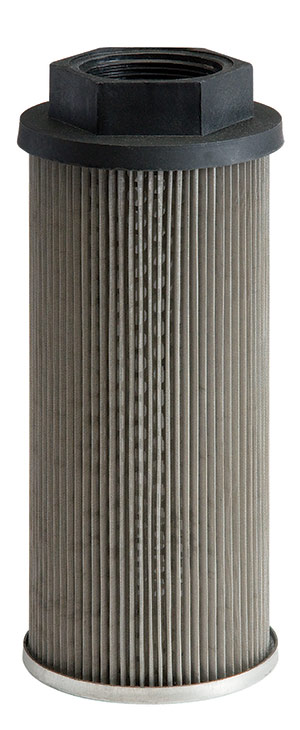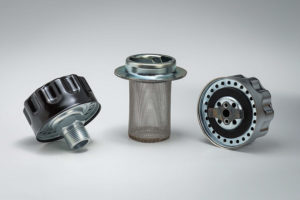Contributed by Don Krause, Business Development, Ohio Fabricators Company
Filtration has come a long way since the beginning of time. Believe it or not, filtration goes all the way back to ancient times. The Egyptians used to strain mash grapes through fabric and make grape juice and wine. Even the use of filters to purify water and make it fit for consumption is not new. Historical records dating back thousands of years ago have many references to making water drinkable. The Bible has many references to water treatment and supply. Egyptians heated, then filtered their water through sand. Ancient Indo-European records refer to placing water in copper kettles, heating it, exposing it to sunlight, and running the water through charcoal. In ancient Rome around 300 B.C, water provided by the aqueducts was used not only for drinking but for bathing. Primitive filtration systems were used in the form of settling tanks to remove large debris from the water to help purify it. You see, the idea of filtration goes back a long, long way.
With the advance of science through the ages, we have learned that we can not only filter solid particles but even molecules. To gain understanding of the relative sizes of particles, the human eye can see no smaller than 40 microns, the human hair averages 50-70 microns in diameter, a grain of table salt is about 100 microns, white blood cells are 25 microns, red blood cells are 8 microns, and most bacteria (cocci) is about 2 microns.
How does this relate to the filtration of fluids in a multi-million-dollar system? If there is an area that is often ignored when designing and operating a hydraulic system, it’s filtration and the placement of filters. This isn’t necessarily intentional, but is simply an area that is not thoroughly given the thought it should be. However, it is one of the most important areas in a system. Think about it for a moment —here you are with a $15 million power system, or even a $10,000 car engine, the inlet filter plugs (if there is one), the pump cavitates, and there goes the system. The pump, being the heart of all power systems, is destroyed — all because of a simple, inexpensive, inlet filter, which was not maintained — or maybe one never existed in the first place. Too much resistance to flow creates considerable power loss and ineffectual operation, or equipment failure.
Filters are relatively inexpensive and well worth the investment. The cost of a filter may mean the difference between a smooth-running and a poor operation. All components in the system are important and need to be protected and maintained properly. One has to look at the entire operation with all its components working in sync. They all work together as a team in getting the job done effectively and efficiently, both in cost and performance.
Filter locations and operation

Filter placement must be done correctly if a system is going to operate at peak performance. When installing filters at different locations, one must consider many variables. What is the system trying to achieve? What is the end product? How fine of filtration should there be at these locations to be effective? Are tight tolerances required in the operation? What is the outside environment like? Is it hot, humid, inside, or outside? What is the flow rate of the pump? What is system pressure?
The list of considerations goes on. Many factors are involved when sizing and installing proper filtration devices to the system. In general terms, there are five locations where some sort of filter should be placed.
- The initial placement should be a suction strainer on the suction side of the pump. This is an absolute necessity. The pump is the heart of any hydraulic system. What happens if the heart in the human body stops working? The system dies. Similarl in the hydraulic system, the system will die. Pumps can take a beating, some more than others, but they still must be protected. The suction strainer is installed for the purpose of keeping the larger pieces of contamination out of the pump. By larger particles, I’m referring to larger than 30 mesh (595 micron) or 238 mesh (238 micron), generally speaking. It all depends on the system as to what micron or mesh size you should install on the suction side. An important note here, too, is to know the difference between micron and mesh. They are completely different. Filter people like to talk in terms of micron. Wire cloth people like to talk in terms of mesh. Case in point: you make a determination that you need 100 mesh suction strainer on the inlet line. 100 mesh = 149 micron. Make sure all involved are clear on the difference. Making an incorrect selection could damage the system.
- The next place of installation is the pressure line, between the pump and the actuation. This is usually where the finest filtration should be in place, as this is the source of the system actuation. The device that is performing the function of the system must be protected if the system is to perform properly.That requires finer filtration than anywhere else in the system.
- The return line should be designed to clean the fluid before it re-enters the reservoir. There will be contamination generated by the moving components in the system, before it travels back into the reservoir, it should be free of any contamination the fluid picked up along the way. As an added note, on some systems where a high-speed return line is present but no return line filter is installed, it is important that a flow diffuser, at the very least, be installed. Otherwise, foaming will occur when the fluid returns to the reservoir causing air bubbles to form in the fluid. As the fluid is re-introduced through the suction line, it could destroy damage or destroy the pump.
- Don’t forget the tank breather. As the fluid level in the reservoir rises and falls while in operation, air enters the reservoir and it is expelled from the reservoir through a breather port. Contaminants in the air can get into the system as air enters. These contaminants must be kept out of the operation. A simple, properly sized tank breather usually takes care of this. As another added note, consider the environment. If the system is operating in a humid or even in an area where outside air is allowed in, a dessicant tank breather would be warranted. This type of breather will keep out contamination in the air and the moisture. Moisture can do just as much damage to component systems and can really play havoc when water gets mixed with hydraulic fluid. After all, water is the second most common type of contamination in any system.

Hydraulic system tank breather caps. Image courtesy of Ohio Fabricators Co.
- The fifth location to be considered should be off-line filtration. Putting a portable unit, like a filter cart, in use to clean the fluid periodically while it is in operation is critical. Simply install the suction line of the filter cart at one end of the reservoir and the discharge line at the opposite end of the reservoir and let it clean the fluid by circulating it while the system is in operation. A portable filtration unit should also be used EVERY time new oil is introduced into the system. Fluids 101 says new oil is not always clean oil. We must not kid ourselves in thinking otherwise. There are too many case studies that substantiate this fact.
This paper is written as a very brief informational guide merely touching on the basics of where filters should be placed in a system for optimum performance. As always, you will hear terms like, “usually,” “generally,” “typically,” and others, when describing an application or regarding an operation. That is because there are many variations to consider when it comes to system design, operation, and maintenance.
Filtration has been around for a long, long time. From ancient times to the present, technology has advanced to the point that so much can be done in so many different ways. Where one size and type of filter can be used in an application, another size and type of filter can be used in another application. It is not always cut and dried in assuming “one size fits all.”
If you are not sure of how to solve a problem, if you have some issue, or have questions regarding an application, make sure you contact a filter specialist. Solving problems is not always having the answers but it is making sure you ask the right questions of the right problem solver. After all is said and done, manufacturers, distributors, dealers, and users are all on the same side.
Ohio Fabricators Co.
www.ohfab.com
Filed Under: Filtration/Contamination Control, Sealing & Contamination Control Tips